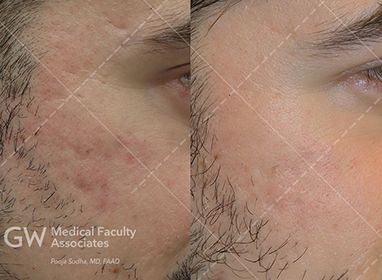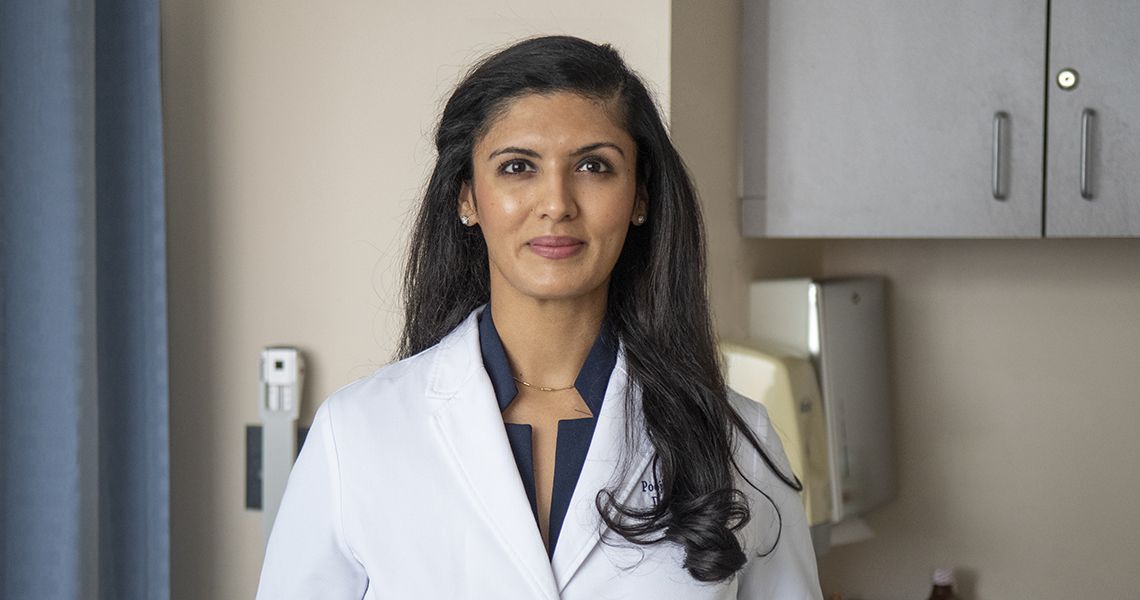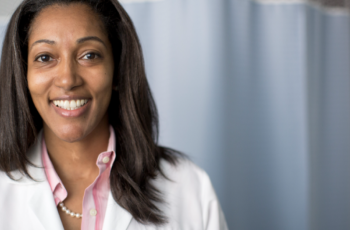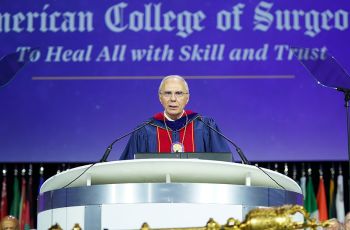Acne is often thought of as the bane of teenagers, but they’re not the only ones affected by zits and pimples. It’s the most common skin issue in the U.S., according to the American Academy of Dermatology, and more than 50 million Americans will deal with breakouts. Here, Pooja Sodha, MD, director of the Center for Laser and Cosmetic Dermatology at the George Washington University (GW) Medical Faculty Associates (MFA) and assistant professor of dermatology at the GW School of Medicine and Health Sciences, answers our questions on how acne forms and the ways to treat it.
What causes acne?
Sodha: Acne is one of the most common inflammatory skin conditions. It is caused by a combination of factors, including genetics, hormonal fluctuations, changes in the function of the oil glands and hair follicles, bacterial infection, and inflammation. In certain cases, cosmetic products, tobacco use, stress, exposure to pollution, and dietary behavior also may be associated with the development or severity of acne.
Who experiences acne?
Sodha: Nearly 85% of teenagers are affected by acne at some point during their adolescent years, but we certainly see adult men and women present with symptoms too. Mask wearing, with fluctuating skin bacterial milieu and mask friction, promotes acne and rosacea, and so we see many patients with this type of presentation as well.
At what point is acne considered moderate or severe?
Sodha: All forms of acne — mild, moderate, or severe — deserve treatment. More severe acne is associated with numerous inflamed red bumps, deep and painful lesions, extensive involvement, and scarring.

treated with Fraxel® (one treatment), 595-nm
pulsed dye laser (Candela Vbeam®, two treatments),
Bellafill® (one syringe, FDA-approved filler for
acne scarring) and maintained with
skin care regimen.
What causes scarring?
Sodha: The trauma to skin from inflammation causes scarring. Touching and picking lesions can also increase risks of scarring, so it’s very important to avoid doing this. Scarring presents as textural changes (raised and/or indented scars) and pigmentary changes (typically redness and/or dark spots).
What treatments would you recommend for acne and acne scarring?
Sodha: We strongly recommend speaking with your dermatologist to discuss topical and oral therapies to prevent new breakouts. If we can stop new acne, then we can reduce the risk of ongoing scarring.
This strategy includes treatments such as:
- Topical:
- Benzoyl peroxide,
- Salicyclic acid,
- Retinoids,
- Azelaic acid, and
- Antibiotics, such as clindamycin and erythromycin;
- Oral:
- Antibiotics, such as doxycycline and sarecycline, and
- Retinoids, such as isotretinoin; and
- Laser therapies:
- 595-nm pulsed dye laser,
- Intense pulsed light,
- 1450-nm nonablative diode, and
- 1064-nm nonablative Nd:YAG laser.
All of these laser therapy options can reduce acne breakouts, the appearance of redness, and the progression of scarring.
What are the benefits of microneedling and laser treatments?
Sodha: These modalities are ideal when acne breakouts are controlled, and we can focus on improving the texture and pigment.
Radiofrequency microneedling (our platform, Lutronic Genius®) and laser resurfacing, such as Fraxel®, Clear and Brilliant®, and fractional ablative resurfacing (Co2), activate the production of collagen and elastic fibers to reduce the appearance of indented, or atrophic, scars and pigmentary changes. Depending on the treatment plan, it may take several treatments to achieve our goals.
What is recovery like?
Sodha: Recovery depends on the type of treatment and whether we have combined different modalities. We encourage gentle skin care with a post treatment skin care regimen discussed with you at the time of consultation.
To make an appointment with Dr. Sodha, please visit the GW Center for Laser and Cosmetic Dermatology or call 202-741-3244.




